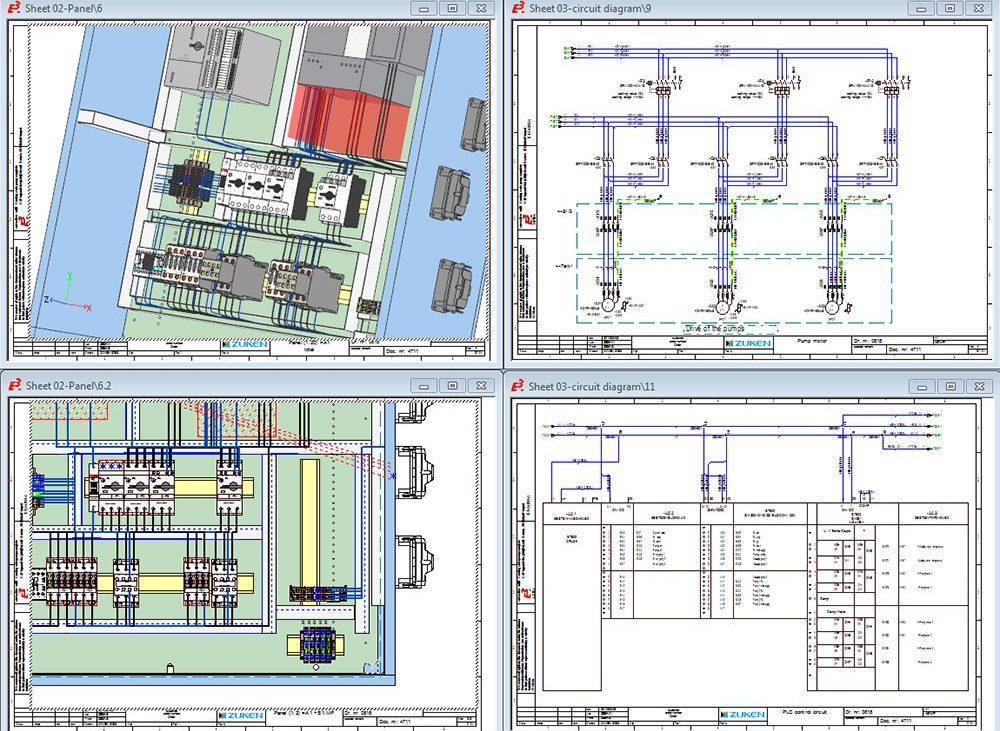Cutting-edge Electrical Design Services for Modern Infrastructure
The advancement of modern framework requires innovative electric design services that not only improve operational performance however additionally address sustainability obstacles. As city environments grow increasingly intricate, including innovations such as smart grids and renewable power resources comes to be extremely important. These innovations not only assure to optimize energy intake however likewise foster durability versus future demands. The landscape of electrical design is going through rapid transformation, motivating a closer assessment of arising trends and their ramifications for lasting infrastructure feasibility. What might the future hold for those that embrace these innovative techniques?
Value of Cutting-edge Electric Design
Ingenious electrical design plays a critical duty in modern infrastructure, influencing not only effectiveness yet also sustainability. As cities advance and the demand for power rises, the requirement for innovative electrical systems comes to be vital. These systems should not just fulfill current demands but also anticipate future development and technical innovations.
A well-executed electrical design can dramatically minimize power usage, consequently decreasing operational prices and decreasing environmental influence. By integrating eco-friendly energy sources, such as photovoltaic panels and wind turbines, innovative designs can boost energy freedom and resilience. Smart grid technologies allow for real-time surveillance and administration of power distribution, optimizing performance and lowering waste.
Security is another critical element of electrical design. Applying innovative innovations and strenuous standards can reduce risks linked with electric failings, guaranteeing a protected setting for residents and companies alike. Furthermore, ingenious designs help with adaptability, allowing frameworks to integrate emerging modern technologies flawlessly.
Secret Patterns in Electrical Design
As the landscape of electric design remains to advance, several key trends are shaping the future of the market. One considerable fad is the integration of clever innovation into electric systems. The proliferation of the Net of Things (IoT) has actually made it possible for real-time tracking and control of electrical tools, boosting performance and assisting in anticipating upkeep.
One more trend is the expanding focus on modular design. This technique enables for scalable and flexible remedies, allowing framework to adapt to transforming demands without substantial renovations. Furthermore, making use of sophisticated simulation tools and Building Information Modeling (BIM) is becoming significantly prevalent, streamlining the design procedure and boosting partnership among stakeholders.
In addition, advancements in materials scientific research are leading to the development of lighter, extra long lasting, and energy-efficient parts. This innovation is particularly vital for high-performance structures and framework projects.
Lastly, there is a significant shift towards data-driven decision-making - electrical load calculation. Leveraging data analytics assists developers enhance systems for efficiency and cost-effectiveness. Together, these trends signify a transformative period in electrical design, boosting performance, sustainability, and strength in modern infrastructure
Lasting Energy Solutions
Lasting power services are increasingly becoming a crucial emphasis in electrical design, mirroring a broader dedication to environmental responsibility and resource efficiency. These solutions intend to site here reduce ecological effect while maximizing power usage in numerous frameworks, from household buildings to large commercial centers.
One of the primary approaches involves the combination of renewable resource sources, such as solar panels and wind generators, into electrical systems. This not only decreases reliance on nonrenewable fuel sources however likewise improves energy resilience. In addition, ingenious energy storage systems, such as innovative batteries, allow efficient management and distribution of power, making sure that surplus power produced during optimal production can be utilized throughout high demand periods.
In addition, energy-efficient design techniques are being adopted to improve general system efficiency. This includes making use of energy-efficient lights, a/c systems, and smart structure modern technologies that keep an eye on and adapt energy usage based upon occupancy and ecological conditions.
Smart Grid Technologies
The application of lasting power remedies naturally causes the exploration of smart grid technologies, which play an essential function in updating electric systems. Smart grids take advantage of progressed interaction innovations and information analytics to enhance the reliability, efficiency, and sustainability of electricity distribution. By integrating electronic innovation with typical grid facilities, these systems facilitate real-time tracking, automated control, and improved decision-making abilities.
One of the essential attributes of wise grids is their capability to accommodate eco-friendly power resources, such as solar and wind power. This versatility not only minimizes dependency on fossil gas yet additionally permits a more decentralized power production design. Clever grids make it possible for demand feedback programs, where customers can change their power use based on real-time pricing, thus promoting power conservation and lowering peak tons demands.
In addition, wise grid innovations improve grid strength by allowing quicker recognition and resolution of outages, eventually lessening downtime. With predictive maintenance and analytics, utilities can boost and enhance operations service shipment. As cities and areas remain to advance, smart grid innovations are vital why not try here for developing a reliable and lasting electrical infrastructure that meets the demands of contemporary society.

Future-Proofing Framework
To make sure lasting practicality and flexibility, future-proofing framework is vital in the quickly developing landscape of electrical design services. As modern technology advances and energy demands change, it is important that electric systems are designed with versatility in mind. This requires including scalable remedies that can accommodate future upgrades without necessitating comprehensive overhauls.

In addition, sustainability needs to be a foundation of future-proofed layouts. Using renewable resource sources, such as solar and wind, and enhancing energy performance decrease dependency on fossil gas, straightening with international efforts to battle environment change.
Verdict
By focusing on sustainability, versatility, and effectiveness, these services address the advancing demands of energy systems. The combination of smart grid innovations and lasting energy remedies improves durability and minimizes operational expenses.
A well-executed electric design can significantly minimize energy intake, therefore decreasing functional expenses and reducing ecological influence. By integrating eco-friendly power resources, such as solar panels and wind turbines, cutting-edge designs can enhance energy freedom and resilience. Furthermore, innovative power storage systems, such as innovative batteries, allow reliable monitoring and distribution of power, making certain that surplus energy produced throughout top manufacturing can be made use of during high need periods.
Wise grids allow need reaction programs, where consumers can change their power usage based on real-time pricing, thereby advertising energy preservation and lowering peak lots needs. (electrical load calculation)
As innovation advancements and power needs shift, it is crucial that check electrical systems are developed with flexibility in mind.